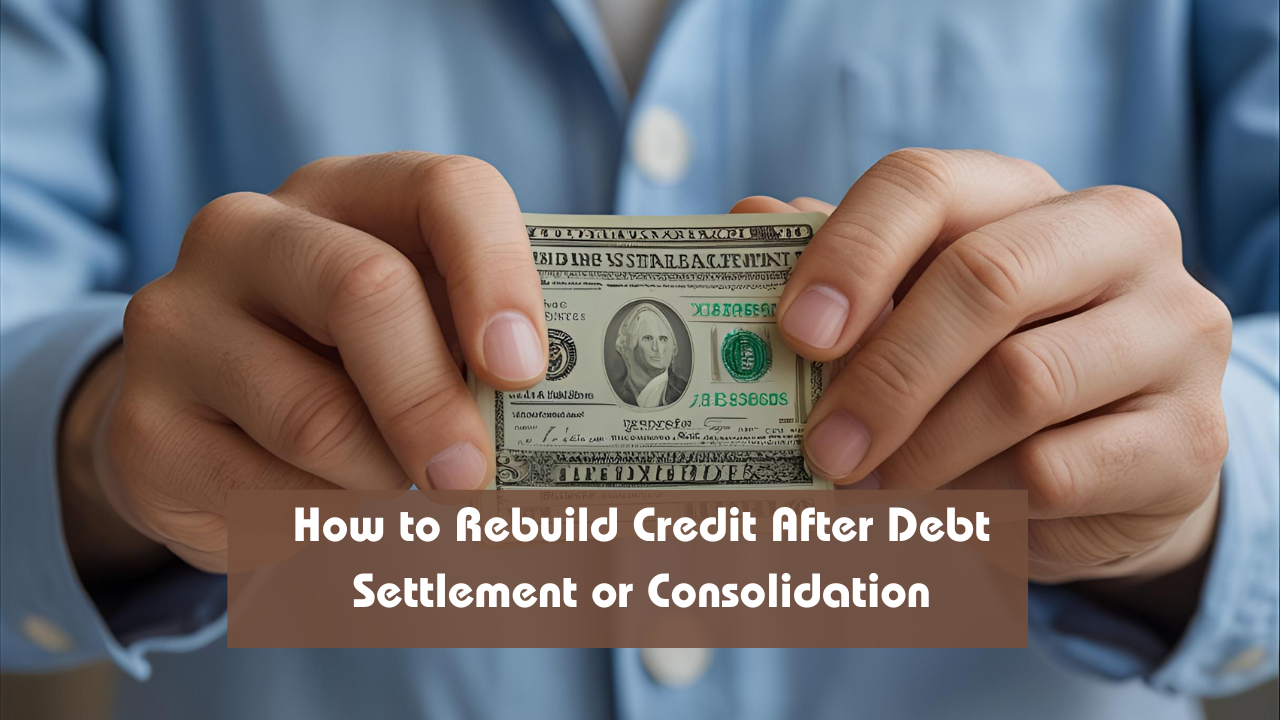Settling or consolidating your debt can be a major relief—but it often comes at a cost to your credit score. The good news? You can rebuild your credit over time with the right strategies.
Whether you’ve recently completed a debt settlement or used a debt consolidation loan, this guide will walk you through the key steps to repair and strengthen your credit profile in a responsible and sustainable way.
Table of Contents
- Why Your Credit Score Drops After Debt Relief
- Step 1: Check Your Credit Report for Accuracy
- Step 2: Make On-Time Payments a Priority
- Step 3: Use a Secured Credit Card or Credit Builder Loan
- Step 4: Keep Your Credit Utilization Low
- Step 5: Limit New Credit Applications
- Comparison Table: Debt Settlement vs. Debt Consolidation
- Final Thoughts
Why Your Credit Score Drops After Debt Relief
Both debt settlement and debt consolidation can negatively impact your credit score—but in different ways:
- Debt settlement often requires you to stop making payments while negotiating with creditors. This results in delinquencies being reported before the debt is marked “settled.”
- Debt consolidation, especially with a loan, may cause a temporary dip due to a new credit inquiry and changes in your credit mix.
That said, both options provide a path forward—and rebuilding your credit is entirely possible.
Step 1: Check Your Credit Report for Accuracy
Your first step should be to review your credit report from all three major bureaus—Equifax, Experian, and TransUnion. Look for:
- Incorrect balances
- Paid accounts still listed as delinquent
- Duplicate negative entries
- Accounts that should show “settled” or “paid in full”
✅ Get a free credit report at AnnualCreditReport.com.
Dispute any errors online to ensure your score reflects accurate data.
Step 2: Make On-Time Payments a Priority
Payment history makes up 35% of your FICO score. After debt relief, it’s essential to rebuild your reputation by consistently paying bills on time.
Key tips:
- Set up autopay for utilities, rent, and any remaining loans
- Keep due dates visible on a calendar or budgeting app
- If necessary, contact lenders to request a different billing cycle
Even one late payment can hurt your progress—so consistency is key.
Step 3: Use a Secured Credit Card or Credit Builder Loan
If you don’t have any open credit accounts, lenders can’t evaluate your current financial behavior. Using small amounts of responsible credit can help rebuild your score faster.
| Rebuilding Tool | How It Works | Best For |
|---|---|---|
| Secured Credit Card | You deposit money as collateral; spend within that limit | People rebuilding with bad credit |
| Credit Builder Loan | You make fixed payments; the bank reports it without upfront credit | Those without current loans |
| Authorized User Status | Added to someone else’s healthy account (with their permission) | Young adults or low-credit users |
Just make sure to keep utilization low (below 30%) and pay off balances each month.
Step 4: Keep Your Credit Utilization Low
Credit utilization refers to the percentage of your credit limit that you’re using. It accounts for 30% of your credit score.
Example:
If your credit limit is $1,000, try to use no more than $300 at a time.
✅ Tips to manage utilization:
- Pay bills before the statement date
- Make multiple small payments throughout the month
- Ask for a credit limit increase (if available and no hard pull is involved)
Step 5: Limit New Credit Applications
Each time you apply for a new credit card or loan, a hard inquiry is made on your report. Too many inquiries can lower your score temporarily and make you appear risky to lenders.
Best practices:
- Avoid applying for credit unless necessary
- Space out credit inquiries by at least 6 months
- Use pre-qualification tools to check offers without a hard pull
Comparison Table: Debt Settlement vs. Debt Consolidation
| Feature | Debt Settlement | Debt Consolidation |
|---|---|---|
| Goal | Settle for less than full balance | Combine debts into one loan/payment |
| Credit impact | More severe due to missed payments | Mild to moderate short-term dip |
| Long-term credit score recovery | Slower, but possible with effort | Quicker recovery with on-time payments |
| Monthly payment | Typically reduced | May stay the same or lower depending on terms |
| Best for | Serious delinquency or hardship | Multiple debts with high interest rates |
Final Thoughts
Rebuilding your credit after debt settlement or consolidation won’t happen overnight—but with patience and the right strategies, it’s entirely achievable.
By checking your report, making timely payments, responsibly using credit, and avoiding new debt, you’ll begin to see your credit score rise over time.
A strong credit score opens doors to better financial opportunities—from lower interest rates to mortgage approval. Start rebuilding today, and your future self will thank you.

